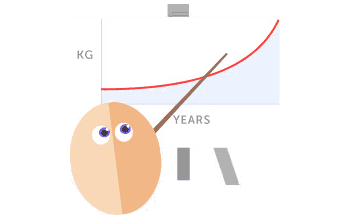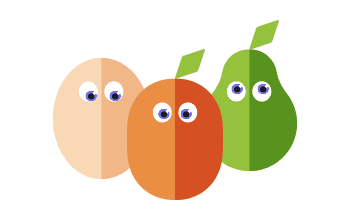When I spoke of this a month ago it was just about how I found things to be for me. Turns out it's a thing.
Taken from Marks Daily Apple:-
I am currently working a job where I spend every other week living outside leading backpacking trips. In the winter, temperatures will be in the 20s or 30s during the day and colder at night. I’ve noticed the last couple weeks that as the weather gets progressively colder, I’ve started craving carbs more and more. I was wondering if I need more carbs to help keep my body warm if I’m living for 8 days at a time in that cold of weather?
Thanks,
Briana
It could be a couple things.
The first thing I would guess is that you’re simply burning more fuel, particularly glycogen, acclimating to the colder temperatures. For example, shivering is used to generate heat and maintain body temperature in the face of cold exposure, and it utilizes a variety of fuel substrates, including lipids, glycogen, and to a much less extent, amino acids. But here’s the thing: even if you’re burning 50% lipids and 40% carbs, you have plenty of body fat to draw upon before turning to dietary sources – even the very lean have pounds and pounds of pure animal fat at their disposal. You’re not going to crave fat, necessarily, because you don’t need to eat any to replenish your stores.
What about glycogen? Glycogen stores are smaller, somewhere in the 400-500 gram range depending on the amount of lean mass you carry. Big muscular men will have larger glycogen stores (but they’ll also use more moving that mass through space). Women tend to have less lean mass and therefore smaller glycogen stores. Burning through glycogen increases the dietary desire for carbohydrate because dietary carbohydrate is the quickest way to replenish glycogen. You can generate it from protein (either through the diet or taken from your own lean mass) through gluconeogenesis, but the body prefers to get it directly. Fewer steps that way (plus, protein’s better used for other things). So, if you’re spending eight days outdoors where the temperature never gets much higher than freezing, you’ll be burning through a lot of glycogen – and craving carbs – simply from all the shivering you do. Throw in some activity (backpacking all day) on top of that and you’ve got a recipe for carb cravings.
You may also be experiencing a natural seasonal variation in hunger. Some researchers have even suggested that seasonal affective disorder, which as you know occurs during winter when the days are short and sun is scarce, might be an evolutionary adaptation that favors energy storage in otherwise inhospitable conditions. I can see that. SAD makes you sad and kind of gloomy, so you’re less likely to put yourself out there and take risks. It reduces your desire to exercise, which conserves energy. It lowers libido. It’s even associated with carb cravings. Nowadays, in our energy replete, already sedentary, carb inundated society, SAD has an overall negative impact on health. It’s not fun (or helpful) to be depressed, crave junk food, feel lazy, or have no libido. But thousands of years ago, it might have improved survival by keeping people alive, conserving energy, increasing energy stores, and limiting procreation in an energy-poor environment (which can have negative epigenetic effects on the fetus).
Under your circumstances, I think additional carbs may be warranted. Eat to your appetite.
Read more: http://www.marksdailyapple.com/cold-wea ... z2lk0YBoar
Taken from Marks Daily Apple:-
I am currently working a job where I spend every other week living outside leading backpacking trips. In the winter, temperatures will be in the 20s or 30s during the day and colder at night. I’ve noticed the last couple weeks that as the weather gets progressively colder, I’ve started craving carbs more and more. I was wondering if I need more carbs to help keep my body warm if I’m living for 8 days at a time in that cold of weather?
Thanks,
Briana
It could be a couple things.
The first thing I would guess is that you’re simply burning more fuel, particularly glycogen, acclimating to the colder temperatures. For example, shivering is used to generate heat and maintain body temperature in the face of cold exposure, and it utilizes a variety of fuel substrates, including lipids, glycogen, and to a much less extent, amino acids. But here’s the thing: even if you’re burning 50% lipids and 40% carbs, you have plenty of body fat to draw upon before turning to dietary sources – even the very lean have pounds and pounds of pure animal fat at their disposal. You’re not going to crave fat, necessarily, because you don’t need to eat any to replenish your stores.
What about glycogen? Glycogen stores are smaller, somewhere in the 400-500 gram range depending on the amount of lean mass you carry. Big muscular men will have larger glycogen stores (but they’ll also use more moving that mass through space). Women tend to have less lean mass and therefore smaller glycogen stores. Burning through glycogen increases the dietary desire for carbohydrate because dietary carbohydrate is the quickest way to replenish glycogen. You can generate it from protein (either through the diet or taken from your own lean mass) through gluconeogenesis, but the body prefers to get it directly. Fewer steps that way (plus, protein’s better used for other things). So, if you’re spending eight days outdoors where the temperature never gets much higher than freezing, you’ll be burning through a lot of glycogen – and craving carbs – simply from all the shivering you do. Throw in some activity (backpacking all day) on top of that and you’ve got a recipe for carb cravings.
You may also be experiencing a natural seasonal variation in hunger. Some researchers have even suggested that seasonal affective disorder, which as you know occurs during winter when the days are short and sun is scarce, might be an evolutionary adaptation that favors energy storage in otherwise inhospitable conditions. I can see that. SAD makes you sad and kind of gloomy, so you’re less likely to put yourself out there and take risks. It reduces your desire to exercise, which conserves energy. It lowers libido. It’s even associated with carb cravings. Nowadays, in our energy replete, already sedentary, carb inundated society, SAD has an overall negative impact on health. It’s not fun (or helpful) to be depressed, crave junk food, feel lazy, or have no libido. But thousands of years ago, it might have improved survival by keeping people alive, conserving energy, increasing energy stores, and limiting procreation in an energy-poor environment (which can have negative epigenetic effects on the fetus).
Under your circumstances, I think additional carbs may be warranted. Eat to your appetite.
Read more: http://www.marksdailyapple.com/cold-wea ... z2lk0YBoar

 haaaa!!
haaaa!!





